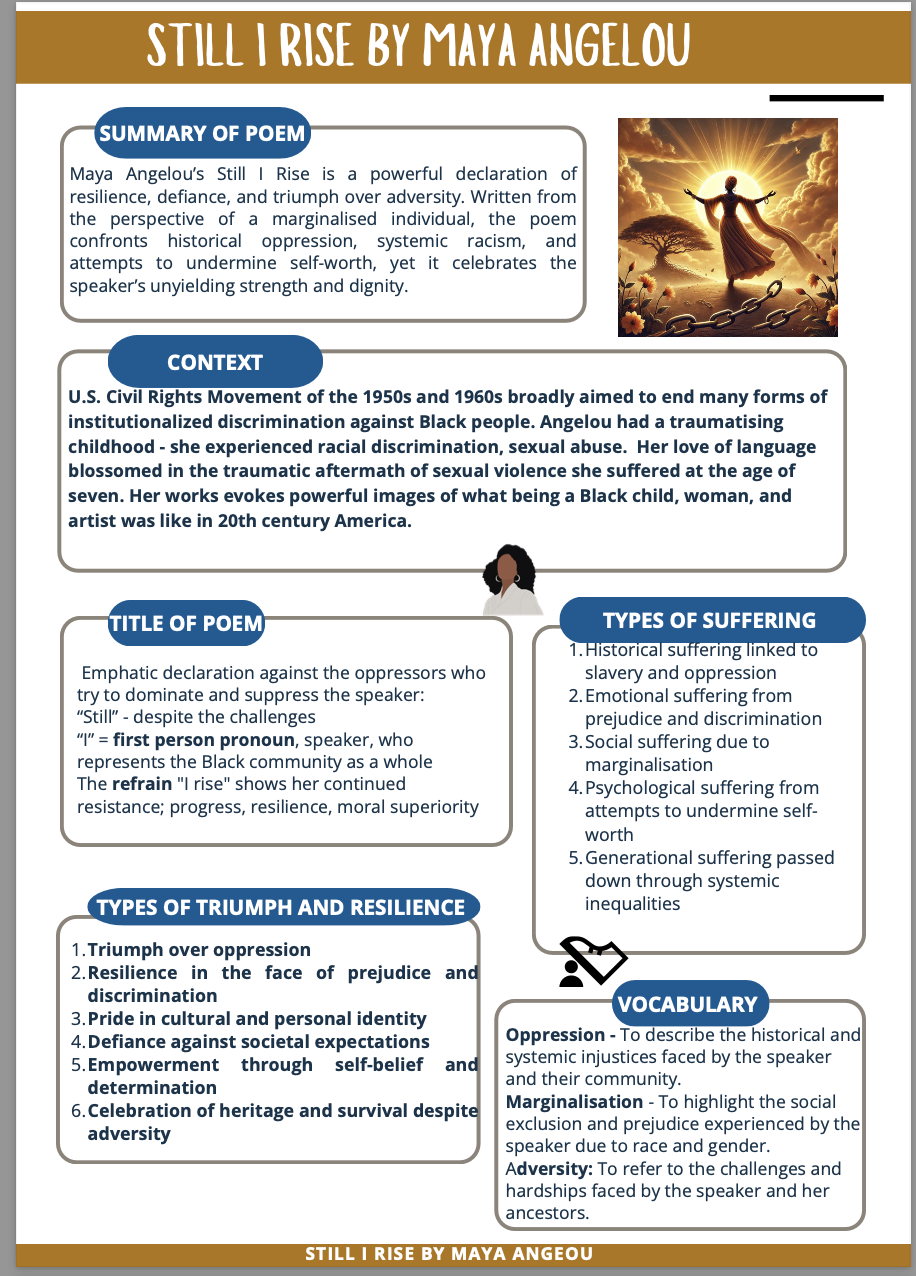

This in-depth analysis (3 page) of Still I Rise by Maya Angelou is designed for iGCSE English Language coursework, offering a comprehensive exploration of the poem’s themes, structure, and literary techniques.
What’s Included?
- Detailed Summary – A clear and concise breakdown of the poem’s meaning.
- Contextual Analysis – Exploration of Maya Angelou’s life, the U.S. Civil Rights Movement, and the poem’s significance.
- Key Themes – Discussion of major ideas such as:
- Triumph over oppression
- Resilience in the face of prejudice
- Cultural and personal pride
- Defiance against societal expectations
- Empowerment through self-belief
- Celebration of heritage and survival
- Literary & Structural Techniques Covered:
- Repetition & Direct Address – The impact of “I rise” and its confrontational tone.
- Historical Allusions – References to slavery, oppression, and resilience.
- Figurative Language & Hyperbole – How Angelou amplifies the message of empowerment.
- Imagery of Oppression & Triumph – Contrasting suffering with success.
- Semantic Fields – How Angelou uses themes of nature, oppression, and violence.
- Rhythm & Cadence – The poem’s uplifting and chant-like quality.
- Progressive Structure & Climactic Ending – The movement from oppression to victory.
- Circular Structure & Meter – The effect of varying rhyme schemes and line lengths.
Why Use This Resource?
Perfect for iGCSE English Language coursework preparation
Helps students refine their analytical responses with in-depth explanations
Encourages discussions on identity, empowerment, and historical context
Engaging and structured to enhance exam performance
Something went wrong, please try again later.
Very detailed! Great help for my students
to let us know if it violates our terms and conditions.
Our customer service team will review your report and will be in touch.
ÂŁ0.00